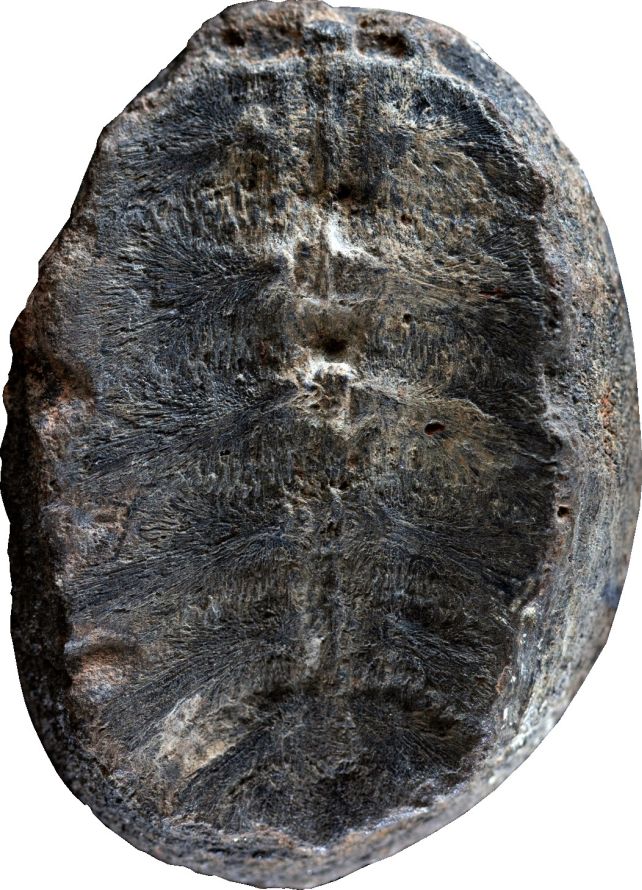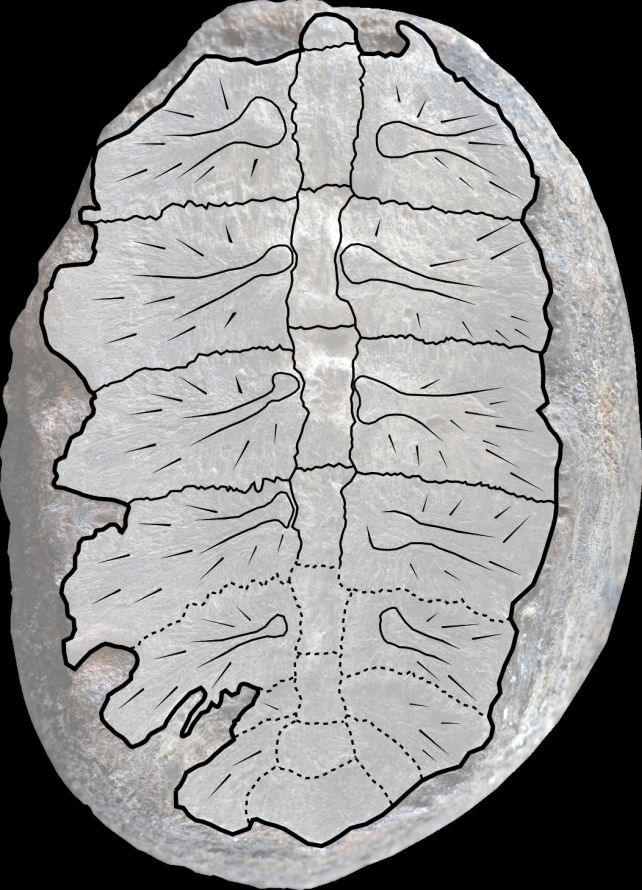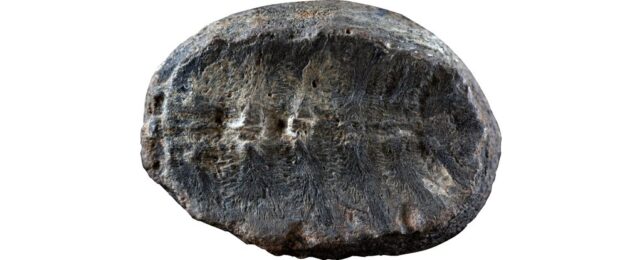Interpreting the past can be a tricky business. We're relying on pieces of rock, millions of years old, and trying to work out what particular, unknown, and possibly long-extinct organism made it a certain way.
It's not unheard of for scientists to get ancient fossils confused or mixed up (with results that are sometimes hilarious in retrospect). But a new paper has revealed a case of mistaken identity that is definitely surprising.
The fossil pictured above, and one other like it, were discovered in Colombia, decades ago, and classified as a plant named Sphenophyllum colombianum. Now, scientists have determined that the fossils are no plant at all, but impressions of the inside of the shells of baby turtles.
They have nicknamed the fossil they studied 'Turtwig', after the Pokémon that is part turtle, part plant.
"We went to the fossil collection at the Universidad Nacional de Colombia in Bogotá and started looking at the plants, and as soon as we photographed them, we thought, 'this is weird'," says paleobotanist Fabiany Herrera of the Field Museum.
"When you look at it in detail, the lines seen on the fossils don't look like the veins of a plant – I was positive that it was most likely bone."

The fossils have always been a little bit hinky. They were discovered by a priest named Padre Gustavo Huertas, who collected rocks and fossils between the 1950s and the 1970s, in a region near the town of Villa de Levya. The two fossils, dated back to the early Cretaceous between 132 and 113 million years ago, were part of that collection.
Huertas, who published a number of papers describing new Cretaceous plant species based on the fossils he found, published a book in 2003, in which he described a species named Sphenophyllum colombianum, based on the two fossils.
Even then, the claim raised an eyebrow or two: Sphenophyllum was thought to have died out over 100 million years prior, and had not been seen in that part of the world before.
These discrepancies caught the attention of paleobotanist Héctor Palma-Castro of the National University of Colombia, so he and his colleagues set out to investigate the fossils in greater detail.
When they found that the specimens were closer to bone than leaf, they reached out to paleontologist Edwin-Alberto Cadena of Del Rosario University, who is experienced with ancient turtle identification.
"They sent me the photos, and I said, 'This definitely looks like a carapace' – the bony upper shell of a turtle," Cadena says. "I said, 'Well, this is remarkable, because this is not only a turtle, but it's also a hatchling specimen, it's very, very small'."

But the fossil was also missing the typical marks that are found on the outside of a turtle's shell. This seems to have contributed to its misidentification.
Rather, the marks on the fossil represent the turtle's vertebrae and ribs, which make up part of the shell. They very closely resemble the midrib and veins of a leaf – it's easy to see how Huertas could think that's what it was.
These bones knit together as the turtle grows, so the researchers were able to determine how old the turtle was when it died. It was no longer a hatchling, but still a juvenile, less than a year old, they found, and a member of the Panchelonioidea clade of marine turtles.
Because juvenile turtles are so fragile, it's rare to find their remains. The researchers believe that Turtwig is likely related to Cretaceous sea turtles that could grow up to 4.5 meters (15 feet) in length, and could represent an important clue about the mysterious life cycle of these ancient beasts.
And, the researchers say, it demonstrates – as so many of these discoveries do – the value and importance of revisiting fossil collections in museums, and applying new knowledge to old bones.
"We resolved a small paleobotanical mystery, but more importantly, this study shows the need to re-study historical collections in Colombia," Herrera says.
"The Early Cretaceous is a critical time in land plant evolution, particularly for flowering plants and gymnosperms. Our future job is to discover the forests that grew in this part of the world."
The research has been published in Palaeontologia Electronica.
